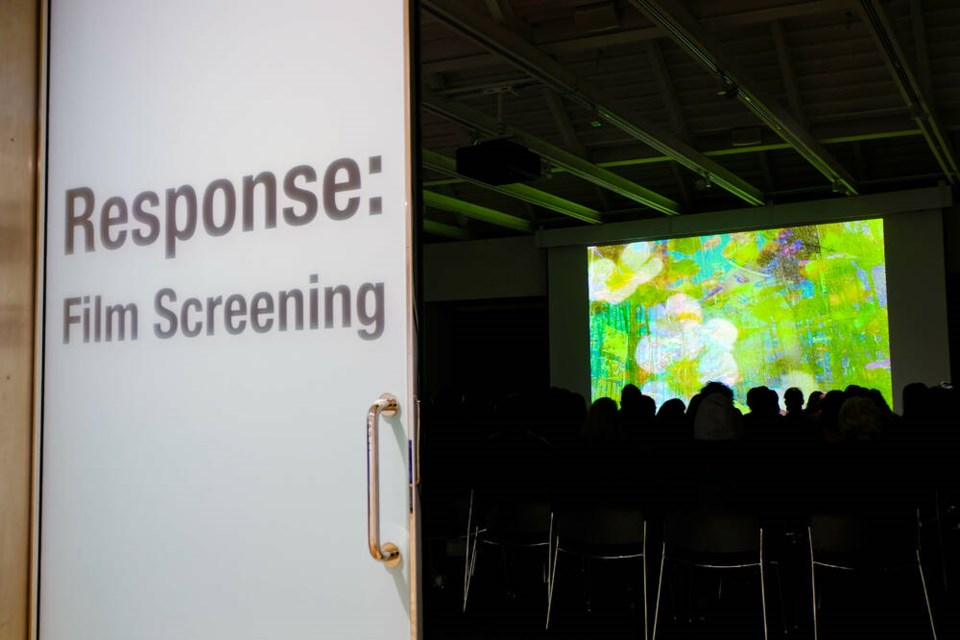For the ten filmmaker artists at the centre of the Response: Resonance exhibition, finally showcasing their films within The Polygon's esteemed gallery is like reaching the peak of a mountain following a long and challenging hike.
Not simply because the exhibition is the culmination of months of work – weekly workshops with artists and gallery curators – but because, for some, it is a long awaited opportunity to have their often underrepresented stories showcased to a wider audience.
The Polygon’s Response is an annual program led by Indigenous artists and gallery curators. Over the course of the summer artists come together to discuss and workshop how they would interpret the program’s theme, before creating that piece for a joint show in the fall.
This year, the theme was Resonance.
“This year’s Response theme Resonance focused on sound and voice,” said The Polygon’s assistant curator Nicole Brabant. “These films present a wide range of experiences and experimentation inspired by the generous mentorship of the artists, and the Knowledge Holders, who led the 2022 workshop series.”
With each artist approaching the theme of sound their own way, the end result is a collection of related but differing pieces: documentary, creative film, soundscapes, singing circles and monologues. Some pieces touch on the relationship between resonance and knowledge transfer among indigenous cultures, while others delve into sound within ceremony.
Others, like the video created by KJ Edwards, a Kanien’kehá:ka and mixed settler filmmaker and video editor, use resonance in the context of healing. Edwards’ film, about her late mother, is entitled istén:’a – ‘my mother’ in Mohawk (Kanien’kéha).
“I have a lot of dreams about her, and this is a piece I’ve been thinking about for a while,” she said.
“There was one dream in particular where she visited me, and she was in a greenhouse surrounded by flowers. My sister had a very similar dream around the same time, and for both of us, her visiting us in our dreams was a huge part of our healing during the grieving process.”
Edwards longed to create some sort of visual response to the dream, brainstorming ideas before landing on the mediums of analog and digital film because of their ability to “represent dream and memory” well.
As for how the film affects its viewers, Edwards hopes gallery guests will feel encouraged to express their own spirituality and belief system, in a way that she, and the other nine artists featured in the program, have been encouraged to do.
“I want them to feel at peace with their own experiences that might be similar, or to just be reminded of that beautiful relationship and that tethering we have to our parents and to our mothers,” she said.
“I think that we don’t often get to see a lot of narratives that are created from an Indigenous lens,” said Edwards, adding how she remains grateful for Brabant and the other gallery curators for taking a “culturally sensitive and supportive approach” when piecing together each of the artist’s stories.
“They were able to really just take these filmmakers, some people who had never made a visual work before in their life, and really support them to make their vision a reality.”
When: Until Feb. 12.
Where: The Polygon Gallery
What: More information, including the full list of participating artists, can be found on .
Mina Kerr-Lazenby is the North Shore News’ Indigenous and civic affairs reporter. This reporting beat is made possible by the .

